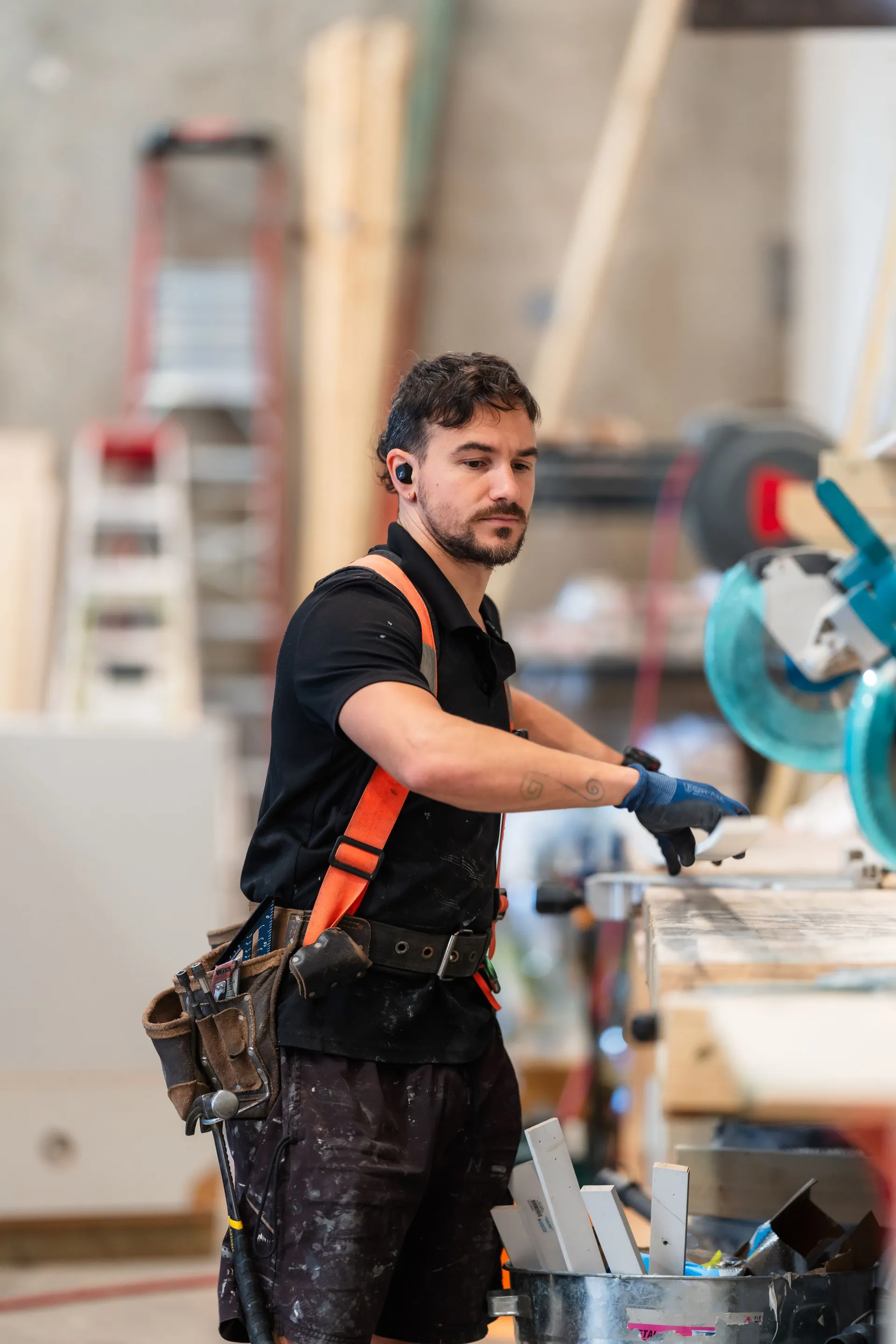Australia’s 2035 emissions target: What businesses should know
Australia's latest 2035 emissions target means major changes are coming to how the nation builds, and priorities in industry sectors, with new expectations and opportunities for local businesses.

The Australian Government has announced a new national emissions reduction target: a 62–70% cut in emissions by 2035, compared to 2005 levels. This is a major step toward achieving net zero by 2050, and it signals a whole-of-economy mobilisation — with significant implications for businesses.
To guide this transition, the government has released six Sector Plans under its Net Zero Plan. These plans outline how emissions will be eliminated across key areas of the economy. For the Sunshine Coast, the most relevant plans are the Built Environment Sector Plan and the Industry Sector Plan. Both plans highlight the considerable investment and supplier opportunities for businesses that leverage the government’s latest prioritise.
Sector plans: A national framework for change
The Sector Plans provide detailed pathways for emissions reduction across electricity, transport, agriculture, resources, the built environment, and industry. They are designed to:
- Accelerate electrification
- Promote low-carbon fuels
- Support technology innovation
- Reduce embodied carbon (emissions intensity of products and materials)
- Ensure a fair and equitable transition
These plans are backed by modelling from Treasury, CSIRO, and the Climate Change Authority, and they will shape government policy, investment, and procurement priorities over the coming decades.
Built Environment & Industry Sector Plans: Why they matter locally
Built Environment Sector Plan
The built environment — homes, workplaces, public spaces, and infrastructure — contributes around 5% of Australia’s direct emissions and 48% of electricity-related emissions. The plan targets:
- Use of low-emissions materials in construction
- Electrification of buildings (replacing gas appliances)
- Improved energy performance of new and existing buildings
- Phasing down hydrofluorocarbons (HFCs) in air conditioning and refrigeration
- Integration of solar, batteries, and flexible electricity demand
Why this matters for Sunshine Coast businesses:
- Construction and trades will need to adapt to new building codes and standards focused on energy efficiency and low-carbon materials.
- Manufacturers of products for the built environment will be expected to reduce embodied carbon and improve material efficiency.
- Government procurement will favour suppliers who offer low/no-emissions materials, products and services.
Industry Sector Plan
The industry and waste sectors contribute around 14% of national emissions. The plan targets nine subsectors, including:
- Food & beverage manufacturing
- Cement and concrete production
- Chemicals and plastics
- Waste and resource recovery
- Advanced manufacturing
Key strategies include:
- Electrifying industrial processes
- Improving energy efficiency
- Adopting alternative fuels (e.g. hydrogen, bioresources)
- Commercialising clean technologies
- Participating in the Safeguard Mechanism (for large emitters)
Why this matters for Sunshine Coast businesses:
- Government grants are available to help businesses decarbonise, improve efficiency, and build capability.
Stay updated on grants through the Sunshine Coast Funding Finder.
- Low-emissions products will be prioritised in both domestic and international markets.
- Exporters will benefit from aligning with global standards — especially in the UK and EU, where carbon-intensive products may face penalties.
A symbiotic relationship: Built Environment & Industry Sector Plans
The Built Environment and Industry Plans are designed to work together.
- The Industry Plan helps businesses eliminate emissions in their operations and products — reducing embodied carbon in materials used in the built environment.
- The Built Environment Plan then uses these low-emissions materials to construct buildings that are energy-efficient, climate-resilient, and circular by design.
This creates a feedback loop: the more local businesses decarbonise, the more they contribute to sustainable construction — and the more competitive they become in government and private procurement.
Commercial opportunity for Sunshine Coast businesses
The focus on material efficiency and low-emissions products presents a clear opportunity for Sunshine Coast businesses.
By taking a pragmatic approach — investing in clean technologies, improving energy performance, and embedding ESG into operations — businesses can:
- Win more work with government
- Access new grants and support programs
- Export to ESG-conscious international markets
- Build long-term resilience and competitiveness
This is not just about compliance — it’s about positioning Sunshine Coast industry as a leader in sustainable, future-ready supply chains.
What support is available?
Businesses keen to leverage the opportunities that this transition presents can start by exploring several programs, resources and tools.
ecoBiz
This Queensland Government funded program, delivered through Business Chamber Queensland, gives businesses access to free support from sustainability specialists. Specialists analyse a business’s energy, waste and water use then provides reduction strategies, helping to save costs and emissions. The carbon calculator tool also allows businesses to capture emissions data which can be provided to government buyers.
Learn more here.
ASPIRE - Circular Economy Marketplace
Available free to Sunshine Coast businesses by council, ASPIRE is an online marketplace for businesses to exchange waste streams. Another business’s waste stream can be another business’s resource stream for use in projects and products. The platform calculates embodied carbon and cost savings to provide data on avoided waste.
Learn more here.
Level Up You Business - Aligning with government priorities
The Sunshine Coast Council platform, Level Up Your Business, outlines government procurement prioritise. Businesses can learn more through the platform on government expectations and strategies to help align.
Learn more here.
Brisbane 2032 Procurement
The Brisbane 2032 Olympic and Paralympic Games will deliver great supplier opportunities to businesses in the South-East Queensland region. From building sporting facilities to supplying the big event, businesses who align with the procurement priorities will gain opportunities to supply Brisbane 2032.
Supplier capability building programs, tools and resources will be made available to businesses interested in becoming Games-ready.
Register for updates here.
